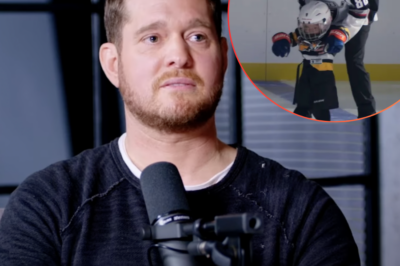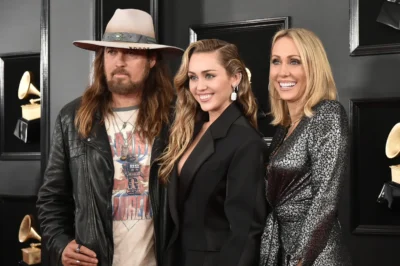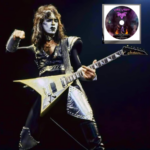Optimus is considered Elon Musk’s ‘distant dream’
Tesla CEO Elon Musk believes the humanoid robot Optimus will bring in trillions of dollars in profits, but is criticized as “unrealistic”.
Announced by Tesla in 2021 and the first prototype launched in 2022, Optimus is 173 cm tall, weighs 57 kg, and is equipped with an information display screen. Elon Musk has repeatedly shared Optimus’s progress and envisioned a promising future for humanoid robots.

Optimus robot serving drinks at a Tesla event last year. Photo: Tesla
Musk and Tesla are currently facing a series of difficulties in the electric car business, when the car models have no new improvements, while sales are declining. The robotaxi service is still only being tested on a small scale. However, Musk spends a lot of time “painting” the future of robotaxi and Optimus robots, promising to make Tesla and investors extremely rich. According to Fast Company , the American billionaire seems to be pursuing a “pipe dream” that is difficult to come true.
When expectations “bump” into reality
In Musk’s vision, the Optimus army of the future will transport batteries, pull spare parts, stack sheet metal inside factories, or serve in households. They will take on the boring, injury-prone tasks that no human wants to do.
Musk said Optimus will start operating on Tesla assembly lines by the end of the year. Next year, the robots will be deployed in warehouses and logistics centers across North America. Within five years, he promised to produce a million robots a year. Within a decade, there will be 100 million Optimuses in widespread use. Last year, he even predicted that there would be 10 billion general-purpose humanoid robots in operation by 2040.
“Optimus has the potential to generate over $10 trillion in annual revenue. It will be the biggest product ever,” Musk told investors in April and reiterated in Tesla’s July 22 earnings call.
In June 2024, he envisioned Tesla reaching a market capitalization of $25 trillion when Optimus was widely deployed – a figure CNBC called “unrealistic and unrealistic”. Analysts believe that the entire humanoid robot market could be worth $13-38 billion between 2030 and 2035, making Musk’s $10 trillion revenue claim mathematically impossible, at least for the next decade.
In fact, things are not going as the billionaire expected. With Optimus’ current progress, experts say it is much slower than competitors in other regions, especially China – where it has a dominant advantage in large-scale manufacturing supply chains.
Jeff Cardenas, CEO of Apptronik, the company behind the Apollo 1 humanoid robot, says the humanoid robotics industry is still “in the Macintosh era.” “That means it’s like the early days of personal computing in the 1980s,” Cardenas says. “We’re still in the early days, which means Tesla still has a chance, but Musk’s $25 trillion valuation is out of the question.”
A series of difficulties
According to Digitimes , Optimus production was halted in mid-June, when its joints overheated, its wrists became soft, and its batteries failed after short periods of use. At that time, only about 1,000 robots were produced from a pilot line in Fremont, California, at a cost of $60,000 each. In addition, some videos of the robots in action showed them moving at less than half the speed of a human.
AInvest cited two sources in the Optimus supply chain as saying that Tesla “has purchased enough components” to produce 1,200 Optimuses and has so far produced nearly 1,000 units – a “modest” number compared to Musk’s target of 5,000-10,000 units this year. According to The Information , Tesla is reevaluating suppliers because of faulty key components, causing further delays.
Some say Optimus’ string of failures explains why Milan Kovac, the head of the Optimus program, abruptly left Tesla in June. The project is now being led by Ashok Elluswamy, Tesla’s head of Autopilot.
One big problem for Optimus involves rare earths needed to produce magnets – a key component that ensures the motors work. Without magnets, there is no way to make a robot that moves with the speed and precision of a real person.
Tesla hasn’t disclosed how many magnets an Optimus robot will need. But analyst Luke Lango told Investor Place , the machine could use 8 pounds of magnets, since a typical humanoid robot needs more than 40 servo motors, and each motor requires nearly 2 pounds of magnets.
In April, Musk blamed Optimus’s production problems on a shortage of rare earths , which are most abundant in China. Given the geopolitical tensions between the US and China, this difficulty is not expected to be resolved anytime soon.
“Designed to fail?”
Even if all of these challenges are overcome, Tesla still won’t be successful with Optimus. According to Fast Company , Musk’s company is pursuing the most difficult form factor in humanoid robotics: no Lidar sensors.
Musk once said Lidar was “for losers,” but using just a regular camera has proven insufficient to understand the world around you. Tesla cars do not have this type of sensor, which increases the risk of accidents. Statistics show that between 2019 and 2023, Tesla cars were involved in 736 accidents in the US, including 17 fatalities, not including near misses, according to Car&Driver . Robots without Lidar are predicted to face similar risks.
Humanoid robots could also be problematic. Chris Walti, who led Tesla’s first Optimus team and left in 2022 to start robotics company Mytra, argues that humanoid robots are “the wrong choice for factory work” because the human form “evolved to escape wolves and bears.” Therefore, applying them to repetitive industrial tasks is “suboptimal.”
In reality, dedicated automation systems designed specifically for specific factory tasks outperform conventional humanoid robots in terms of cost, reliability, and efficiency, making Tesla’s solution both an expensive engineering exercise and lacking a viable business strategy.
“Unless Optimus breaks through into something more durable, easy to build, and cheap, it’s just going to be a showroom item for a long time,” Apptronik’s Cardenas said.
Mr. Cardenas still values humanoid robots for performing multiple tasks rather than a single function. But companies like Tesla need to scale, be flexible, and pack as many functions as possible into a single machine.
Even if all of these factors go well, experts say it will be a long time before Optimus helps Tesla reach tens of trillions of dollars in annual revenue. Things are even more far-fetched when, so far, this humanoid robot has only been able to do a few small tasks such as folding clothes, running, cooking… or most recently, scooping popcorn for customers inside the newly opened Tesla Diner in Los Angeles.
News
Ella Langley Just Accomplished Something No Other Solo Female Country Artist Has in This Decade
Ella Langley has added another entry to the record books. The country singer’s track “Choosin’ Texas” has been collecting records…
Blake Shelton and John Legend’s Christmas party was chaotic. And the Christmas tree wearing a tattered cowboy hat was the highlight!
Blake Shelton’s Christmas Tree Topper Had John Legend Frazzled: “What Is This?” If only The Oddest Couple, starring The Voice Coaches, became a…
MICHAEL Buble has given fans a rare glimpse into his home life following his shock departure from The Voice.
Michael Buble gives rare glimpse into his home life as he releases surprise documentary after leaving The Voice The singer, 50, stepped…
The lawsuit involving a woman claiming to be Miley Cyrus’s mother has become even more outrageous after she decided to reveal the truth about the story.
Woman Who Claims To Be The Mother Of Miley Cyrus Reveals Why She Chose That Name…Except Miley Isn’t Actually Her…
The country singer admitted that he not only swam naked in Jason Aldean’s pool but also urinated in it.
Country music star admits he went skinny dipping and peed in Jason Aldean’s pool Country music singer Tyler Farr revealed…
John Daly Pens Heartfelt Message After Narrow Defeat Against Matt Kuchar & His Son at the PNC
Team Daly once again turned heads at the PNC Championship. And it wasn’t just with their shots, but their twinning…
End of content
No more pages to load












